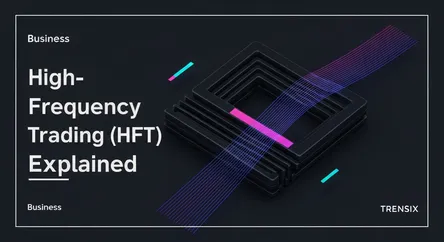Business
High-Frequency Trading (HFT) Explained

Discover High-Frequency Trading (HFT), the use of powerful computer algorithms to transact a large number of orders at fractions of a second.
What is it?
High-Frequency Trading (HFT) is a sophisticated form of automated, algorithmic trading characterized by high speeds, high turnover rates, and high order-to-trade ratios. HFT firms use powerful computers and complex algorithms to analyze market data and execute a massive number of orders in milliseconds. These strategies capitalize on tiny, fleeting price discrepancies that are impossible for human traders to exploit. By operating at such extreme speeds, HFT platforms can gain a critical advantage, executing trades before the rest of the market can react to new information. It's a highly competitive field where every microsecond provides a potential edge.
Why is it trending?
HFT remains a hot topic due to the relentless advancement of technology and a constant "arms race" for speed. Firms invest heavily in cutting-edge infrastructure, like microwave towers and specialized fiber-optic cables, to shave microseconds off data transmission times. The increasing role of AI and machine learning in refining these algorithms also keeps it in the spotlight. Furthermore, HFT's impact on market structure and stability is a subject of ongoing debate among regulators and investors, especially following periods of high volatility or "flash crashes" where HFT is often scrutinized.
How does it affect people?
For the average investor, HFT's impact is complex. Proponents argue that it enhances market liquidity and narrows the bid-ask spread, which can lower transaction costs for everyone. However, critics claim HFT creates an unfair playing field, favoring institutional giants over retail investors. It can also contribute to market fragility by providing "phantom liquidity" that vanishes during times of stress, potentially exacerbating market swings. The immense speed of HFT introduces systemic risks that can trigger sudden market disruptions, impacting investor confidence and portfolio values across the board.